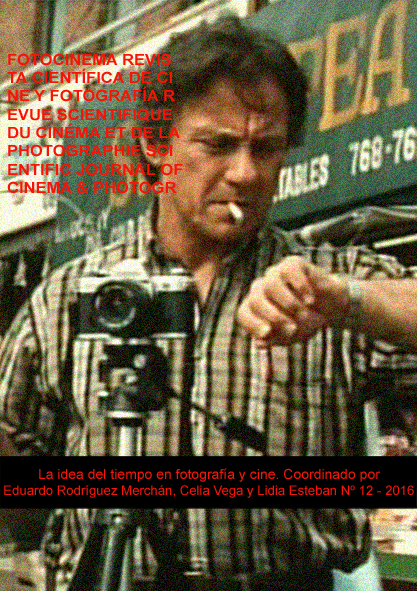El arte cinematográfico y el arte gastronómico: dos caminos paralelos que transitan en torno al tiempo
DOI:
https://doi.org/10.24310/Fotocinema.2016.v0i12.6042Abstract
Este artículo expone las semejanzas y diferencias entre el séptimo arte y la gastronomía de vanguardia a partir de la formulación de la siguiente hipótesis: si el cine es el arte por excelencia del tiempo y del espacio, mientras la gastronomía lo es de lo efímero: ¿en qué medida esta última puede ser un arte sin contar con la ayuda de los medios audiovisuales? Tras un capítulo introductorio en el que se definen y describen a grosso modo ambas disciplinas, el artículo señala, primero, los caminos paralelos que han seguido ambas desde la aparición del cinematógrafo para detenerse después en mostrar su imbricación con la sociedad de su tiempo y su entrada, casi simultánea, en los museos y, en el caso de la gastronomía, en los festivales a la par que hace hincapié en sus fuentes de inspiración, referencias y canales de exhibición y de divulgación. Por último, se detiene en analizar los puntos comunes de sus métodos de trabajo para, al igual que se ha venido haciendo en los apartados anteriores, señalar las concomitancias y diferencias existentes entre ambos.Abstract:
This article discusses the similarities and differences between cinema and avant-garde cuisine from the formulation of the following hypothesis: if cinema is the art par excellence of time and space, while cuisine is of the ephemeral: to what extent this last one can be an art without the help of audio-visual media? After an introductory chapter in which are defined and described roughly both disciplines, the article points out, first, the parallel ways followed by both since the birth of cinema to reflect on how to show their relation with the society of their time and their entrance, almost simultaneously, in museums and, in the case of gastronomy, in festivals, later. At the same time the article emphasizes in their inspiration sources, references and channels of display and divulgation. Finally, analyzes the common points of their working methods, as it has been done in previous sections, pointing out the similarities and differences between them.
Palabras clave:
Cine; gastronomía; procesos; tiempo; memoria; efímero.
Keywords:
Cinema; Gastronomy; Process; Time; Memory; Ephemeral.Downloads
Metrics
Publication Facts
Reviewer profiles N/A
Author statements
Indexed in
-
—
- Academic society
- N/A
- Publisher
- Universidad de Málaga
Downloads
Published
How to Cite
Issue
Section
License
All contents published in Fotocinema Revista científica de cine y fotografía are protected under the Creative Commons Attribution-NonCommercial-ShareAlike 4.0 International (CC BY-NC-SA 4.0) license. All about this license is available in the following link: <http://creativecommons.org/licenses/by-nc-sa/4.0>
Users can copy, use, redistribute, share and exhibit publicly as long as:
- The original source and authorship of the material are cited (Journal, Publisher and URL of the work).
- It is not used for comercial purposes.
- The existence of the license and its especifications are mentioned.
There are two sets of authors’ rights: moral and property rights. Moral rights are perpetual prerogatives, unrenounceable, not-transferable, unalienable, imprescriptible and inembargable. According to authors’ rights legislation, Fotocinema. Revista científica de cine y fotografía recognizes and respects authors moral rights, as well as the ownership of property rights, which will be transferred to University of Malaga in open access. The property rights are referred to the benefits that are gained by the use or the dissemination of works. Fotocinema. Revista científica de cine y fotografía is published in an open access form and it is exclusively licenced by any means for doing or authorising distribution, dissemination, reproduction, , adaptation, translation or arrangement of works.
Authors are responsable for obtaining the necessary permission to use copyrighted images.














13.png)



